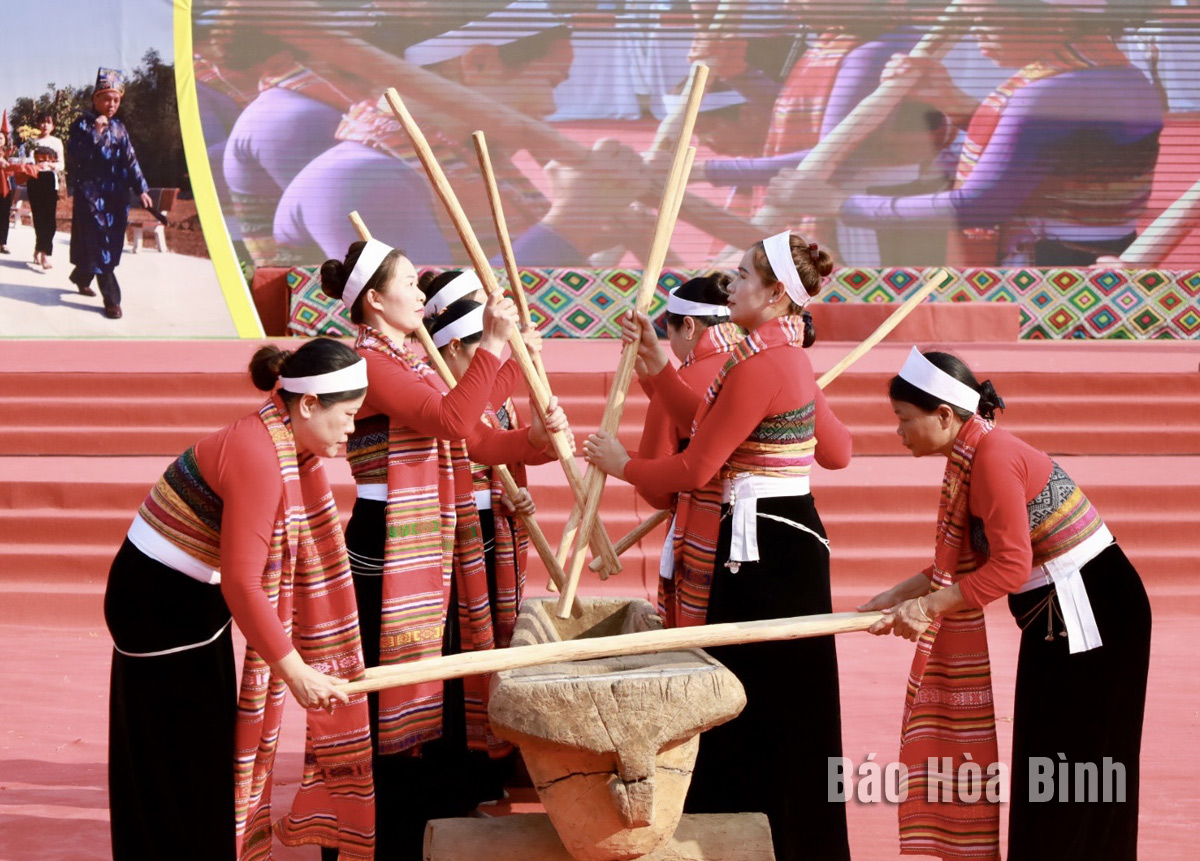



The Keng Loong performing art of the Thai ethnic group in Mai Chau district was recognised as a national intangible cultural heritage element, helping preserve and promote this heritage's values.
Between 2022 and 2024, several of Hoa Binh's cultural assets gained national recognition, with the folk knowledge of bamboo calendar, the Khai Ha festival of the Muong people, and the Keng Loong performing art of the Thai ethnic group in Mai Chau district inscribed as national intangible cultural heritage. The archaeological sites of the Trai hamlet cave and the Vanh village stone shelter in Lac Son district were classified as special national relics. Previously, two other cultural heritage elements, the Muong gong art and Mo Muong, had already been added to the national intangible cultural heritage list.
The province is now home to 45 cultural practitioners bestowed with the People’s Artisan and Meritorious Artisan titles, with ethnic minority artisans accounting for 94% of them.
Hoa Binh province has particularly focused on the project to conserve and promote the Mo Muong cultural heritage for 2019–2025 and beyond, especially since the Prime Minister ordered a dossier be built to seek UNESCO recognition of Mo Muong as part of the intangible cultural heritage in need of urgent safeguarding. Meanwhile, it has also accelerated efforts to collect and document intangible cultural heritage.Currently, it has submitted two dossiers to the Ministry of Culture, Sports and Tourism, proposing "thuong dang" and "bo meng" singing of the Muong people and the Muong skirt waistband weaving techniques to be added to the list of the national intangible cultural heritage.
Furthermore, the province has worked to raise public awareness of local historical sites. For the archaeological sites of the Trai hamlet cave and the Vanh village stone shelter, it has directed planning and implemented conservation measures while popularising the archaeological values of the world-renowned Stone-Age Hoa Binh Civilisation. Steps are also being taken to nominate the Tien Pagoda historical - cultural relics and landscape complex in Phu Nghia commune, Lac Thuy district, as a special national relic site.
With efforts to restore and preserve cultural identity, many traditional festivals have been revitalised, with the Muong people's Khai Ha (going down to the field) festival and the Tien Pagoda festival in Lac Thuy organised at the provincial level. Besides, more than 70 festivals are held annually, primarily folk celebrations of ethnic minority groups.
The province currently has 1,482 village-level musical teams that contribute to teaching, preserving, and bringing into play local cultural heritage.
The conversation efforts have been intensified with the groundbreaking of the Mo Muong cultural heritage conservation space connected with tourism services in Hop Phong commune, Cao Phong district, in January. Besides, the province has directed relevant sectors and localities to develop the Muong ethnic cultural space conservation and tourism development project in Phong Phu commune, Tan Lac district, along with a restoration project for the Trai hamlet cave and the Vanh village stone shelter. The locality is also planning renovation for many historical and revolutionary sites.